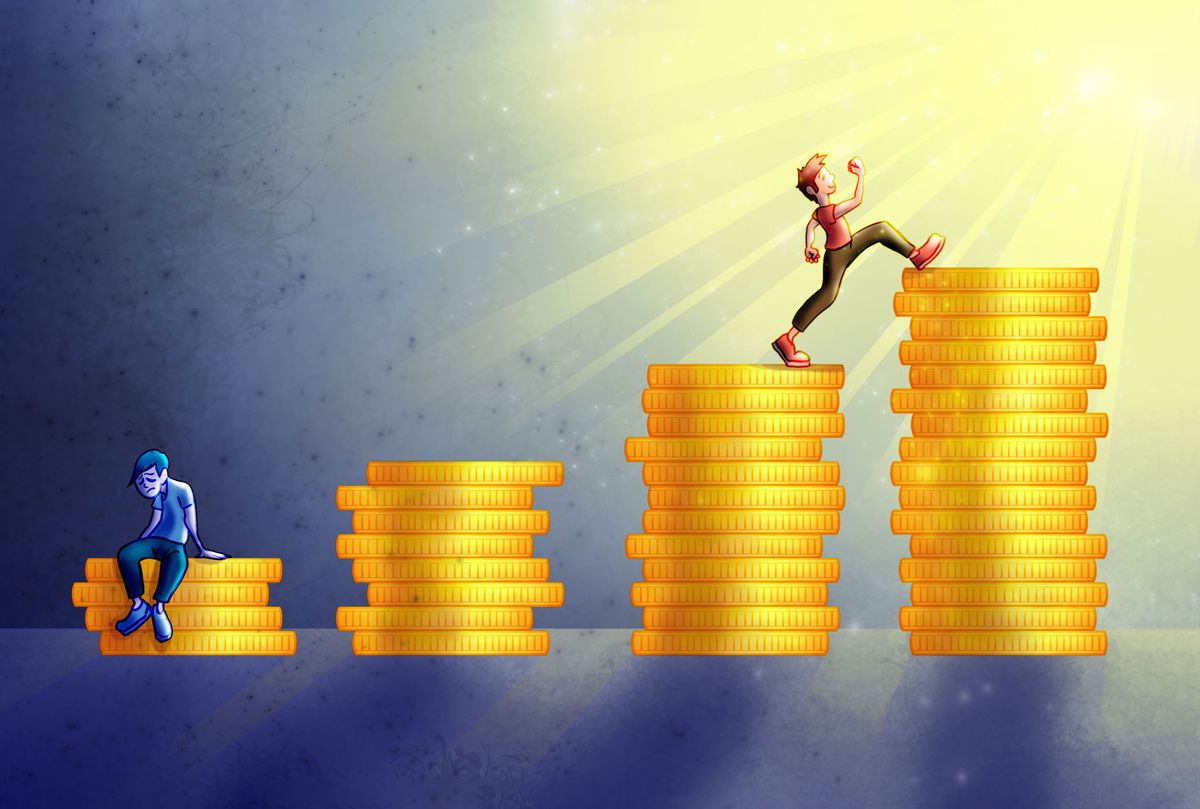An academic study published in the Journal of Epidemiology and Community Health found that every dollar increase in the minimum wage resulted in a 3.4 to 5.9 percent decrease in the overall suicide rate.
Though formally published in late 2019, the report has received renewed scrutiny and inquiry from the media in the past week, including write-ups in The Hill and Ars Technica.
The study analyzed monthly health and employment data from all U.S. states and Washington, D.C. from 1990 to 2015. The observed decrease in suicide rate applied to adults age 18 to 64. The authors noted that the relationship between minimum wage increase and decreased suicide rate were most prominent in periods of high unemployment, and among those with a high school education or less.
"We estimated a 6% reduction in suicide for every dollar increase in the minimum wage among adults aged 18–64 years with [a] high school education [or less]," the authors of the study wrote. "As theorised, no effect of minimum wage was observed on suicide among those with [a] college degree, supporting the parallel trends assumption and thus the plausibility of our results."
"Over the entire study period from 1990 to 2015, we estimated that a US$1 increase in state minimum wage above prevailing levels could have prevented 27,550 suicide deaths in this group, and a US$2 increase could have prevented 57,350 suicides," they note.
The report is damning for big business and their lobbyists, who have gone to extreme lengths in the past two decades to prevent the minimum wage from being raised in the United States — often building their case with specious arguments or sophistry.
In 2017, the Trump administration passed a tax reform bill that greatly reduced the tax burden on corporations and the rich. That tax package resulted in many of the nation's largest corporations having their tax burden massively reduced, resulting in billions of dollars in additional revenues.
Yet while Trump and the GOP advertised the tax bill's appeal on the basis that such revenues would trickle down to workers, that did not happen. Rather, many corporations opted to spend their newfound windfall on stock buy-backs, a means for publicly-traded corporations to gain control over more of their companies. AP News reports that "U.S. corporations spent a record amount buying back their own shares [in 2018], using 2017′s tax-cut windfall to reward shareholders rather than to invest or expand their businesses.
AP adds that "companies in the S&P 500" — which only includes 505 publicly-traded American corporations — "spent $806 billion on stock buybacks in 2018, blowing away the previous record of nearly $590 billion set in 2007."
Researchers from the Center for Public Integrity wrote in the Guardian that "the bulk of the $150bn the tax cut put into the hands of corporations in 2018 went into shareholder dividends and stock buy-backs, both of which line the pockets of the 10% of Americans who own 84% of the stocks . . . . Just 6% of the tax savings was spent on workers."
"In the first three months after the bill passed, the average weekly paycheck rose by $6.21. That would be $233 a year," they add.
Notably, the federal minimum wage of $7.25 an hour went unchanged between 2009 and 2019, without even adjustment for inflation. In July 2019, the House of Representatives passed a bill that would raise the federal minimum wage to $15 an hour, though it is unlikely to pass the Senate.
Raising the minimum wage is often billed as a means of attaining greater economic justice. A 2019 report from the Economic Policy Institute noted that raising the minimum wage to $15 an hour would benefit "39.7 million workers," and that such a change would greatly improve the quality of life of women and non-white workers. "The majority of workers who would be affected by a raise to the minimum wage (57.9 percent) are women," the EPI notes. "The minimum wage increase would disproportionately raise wages for people of color — for example, black workers make up 11.8 percent of the workforce but 16.9 percent of affected workers."
"This disproportionate impact means large shares of black and Hispanic workers would be affected: 38.1 percent of black workers and 33.4 percent of Hispanic workers would get a raise," they continue.
The economic impact of such a raise would have reverberations throughout the economy. The report continues:
Gradually raising the minimum wage to $15 by 2024 would directly lift the wages of 28.1 million workers. The average directly affected worker who works all year would receive a $3,900 increase in annual wage income—equal to a raise of 20.9 percent. Another 11.6 million workers would benefit from a spillover effect as employers raise wages of workers making more than $15 in order to attract and retain employees.
One might add that, in addition to these net positives, such a wage increase would also greatly decrease the number of deaths of despair in the United States.



Shares